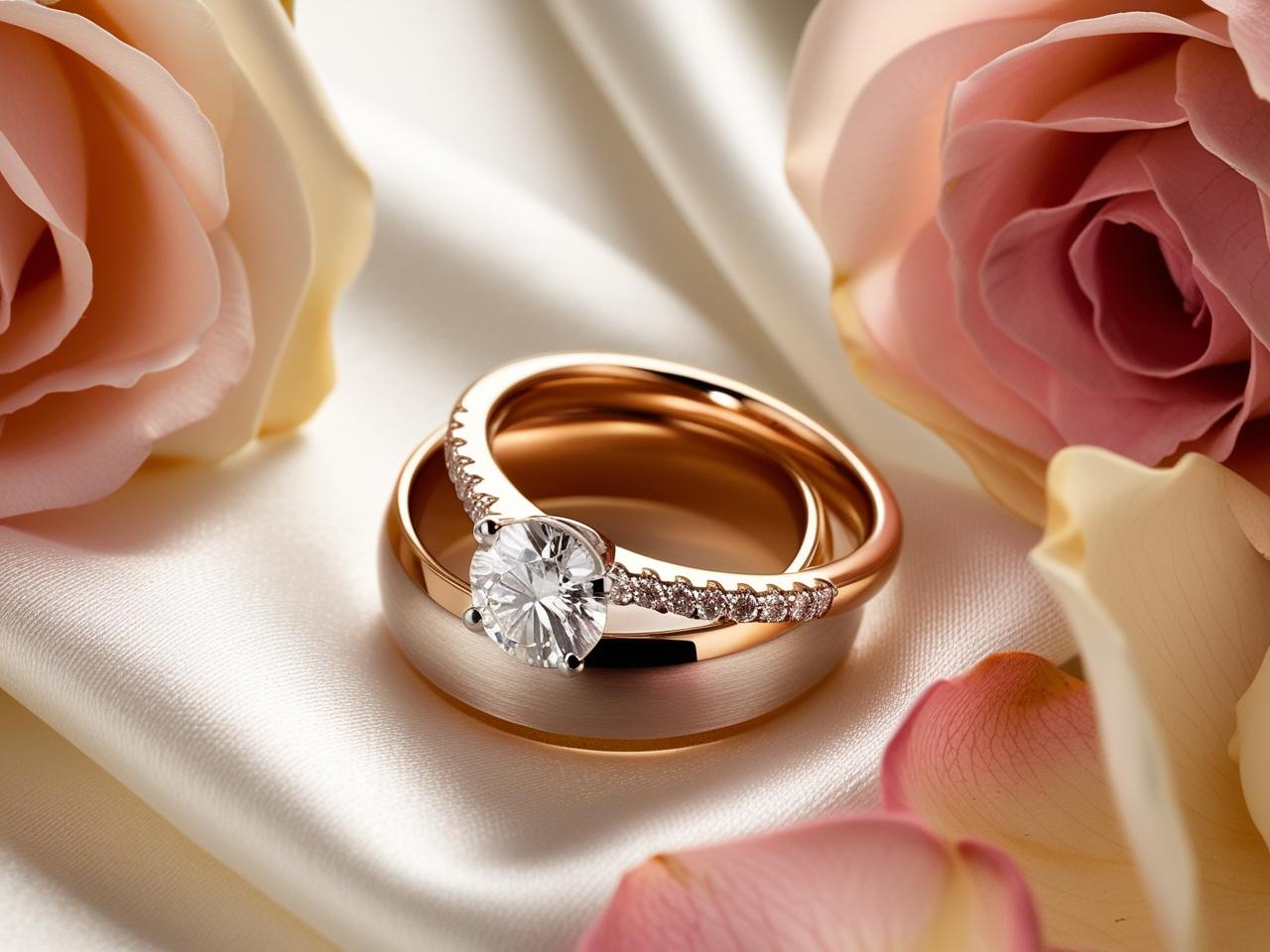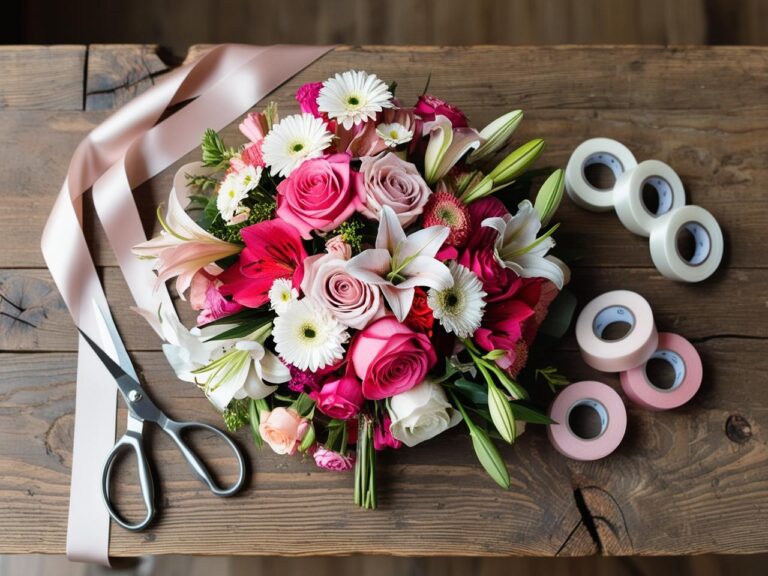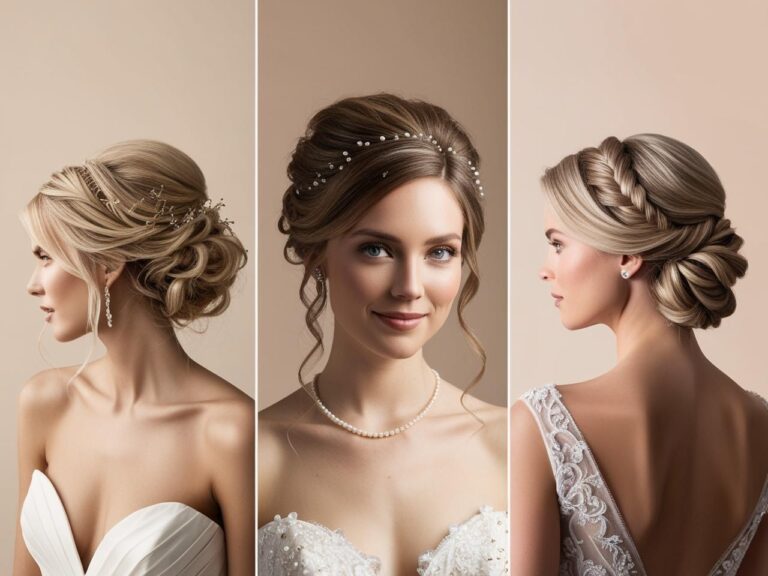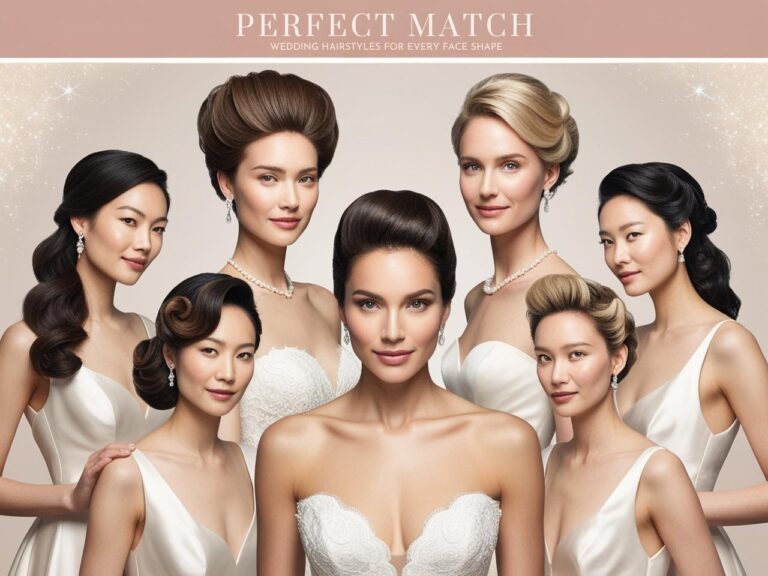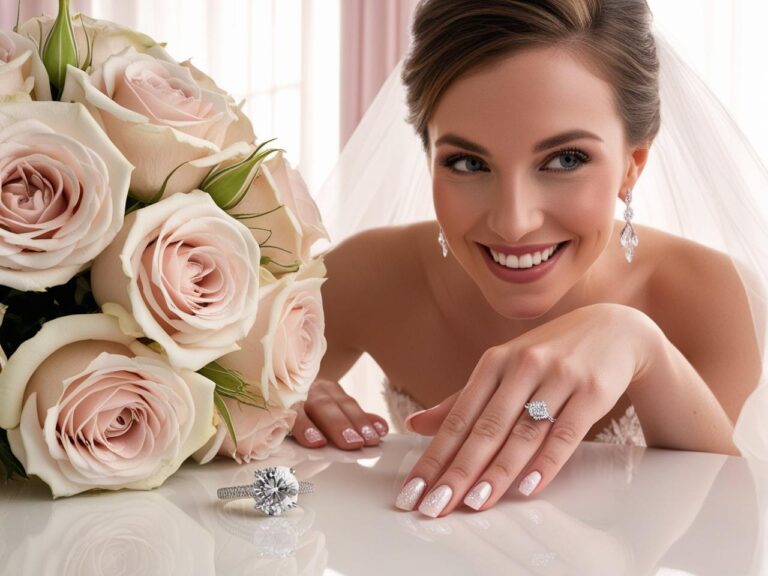The Ultimate Guide to Wedding Rings: History, Styles and Care
Wedding rings are more than just pieces of jewelry, they are timeless symbols of love, commitment, and unity. Traditionally crafted from precious metals like gold, these rings have adorned the fingers of married individuals for centuries. The custom traces its roots back to ancient Rome, where rings were exchanged as tokens of fidelity and marital promises. In Western culture, wedding rings are typically worn on the base of the left ring finger due to the belief in the “vena amoris,” or vein of love, which was thought to connect directly to the heart. Over time, wedding ring customs and styles have evolved, reflecting cultural shifts, technological advancements, and personal preferences.
In this comprehensive guide, we’ll explore the rich history of wedding rings, delve into their compositions and styles, examine cultural practices surrounding them, and provide practical advice on choosing, wearing, and caring for these cherished symbols of marriage.
1. History of Wedding Rings
The tradition of exchanging wedding rings dates back thousands of years, with early examples found in ancient Rome and Greece. These early rings were often simple bands made of iron or other durable materials, symbolizing a dowry or promise of fidelity. As Christianity spread throughout Europe during the Middle Ages, wedding rings became an integral part of religious ceremonies, signifying the sacred bond between spouses.
Historical styles of wedding rings varied widely across cultures and eras:
- Gimmel Rings: Composed of two interlocking bands, these rings were worn separately by the couple during their engagement and united at the wedding.
- Poesy Rings: Sterling silver bands inscribed with romantic poetry or phrases.
- Puzzle Rings: Intricate designs featuring multiple interlocking bands that required skill to assemble.
- Fede Rings: Bands adorned with clasped hands, symbolizing loyalty and partnership.
During World War II, limited access to gold in the UK led to the creation of “utility” wedding rings, simple, unadorned bands designed to conserve resources. Meanwhile, the double-ring ceremony gained popularity in countries like the United States, Canada, and Brazil, where both partners began wearing rings as a mutual declaration of love.
Today, wedding ring customs continue to evolve globally. For instance, Nordic countries and Germany favor plain bands, while Spain and Mexico incorporate elaborate designs and gemstones. This diversity highlights the universal yet deeply personal nature of wedding rings.
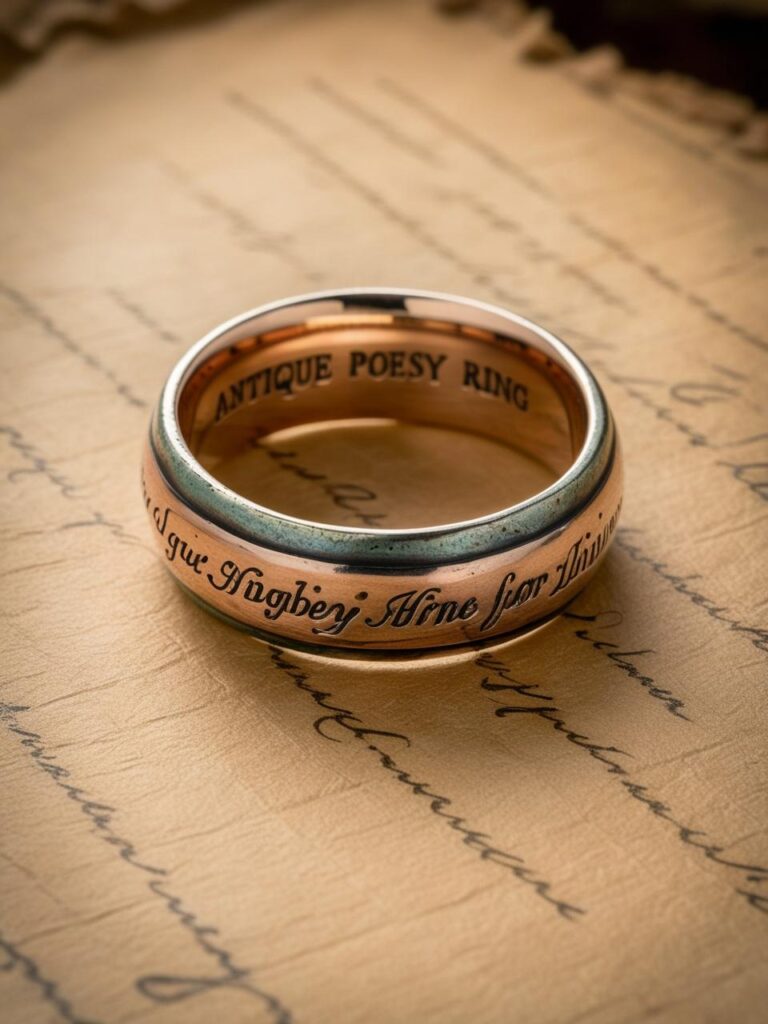
2. Compositions and Styles of Wedding Rings
Modern wedding rings come in a dazzling array of materials, styles, and designs, catering to every taste and budget. Here’s a breakdown of popular options:
Popular Metals
- Gold: Available in yellow, rose, and white varieties, gold remains a classic choice. Its durability depends on karat weight, with higher karats offering richer hues but softer structures. White gold requires periodic rhodium plating to maintain its shine.
- Platinum: Known for its luxurious appearance and hypoallergenic properties, platinum is highly durable and retains its color over time. However, it comes with a premium price tag.
- Titanium and Stainless Steel: Lightweight and scratch-resistant, these metals appeal to those seeking affordability and modern aesthetics. Resizing can be challenging, though.
- Tungsten Carbide: Valued for its deep gray hue and resilience, tungsten carbide is ideal for active lifestyles but cannot be resized if damaged.
Gemstone Wedding Rings
For couples seeking uniqueness, gemstone rings offer vibrant alternatives to traditional diamonds. Popular choices include sapphires, rubies, emeralds, and colored diamonds. Each stone carries symbolic meanings, such as sapphire representing wisdom and rubies denoting passion. When selecting a gemstone ring, consider factors like durability, setting style, and customization options.
Modern Trends
Contemporary trends emphasize individuality and innovation. From Art Deco-inspired designs to bold gold accents, today’s wedding rings blend nostalgia with cutting-edge craftsmanship. Stacking rings, solitaires with unique settings, and mixed-metal combinations are particularly fashionable. Celebrities also influence trends, with rose-cut diamonds and chunky bands gaining traction.
Engravings add a personalized touch, allowing couples to immortalize names, dates, or meaningful phrases within their rings.
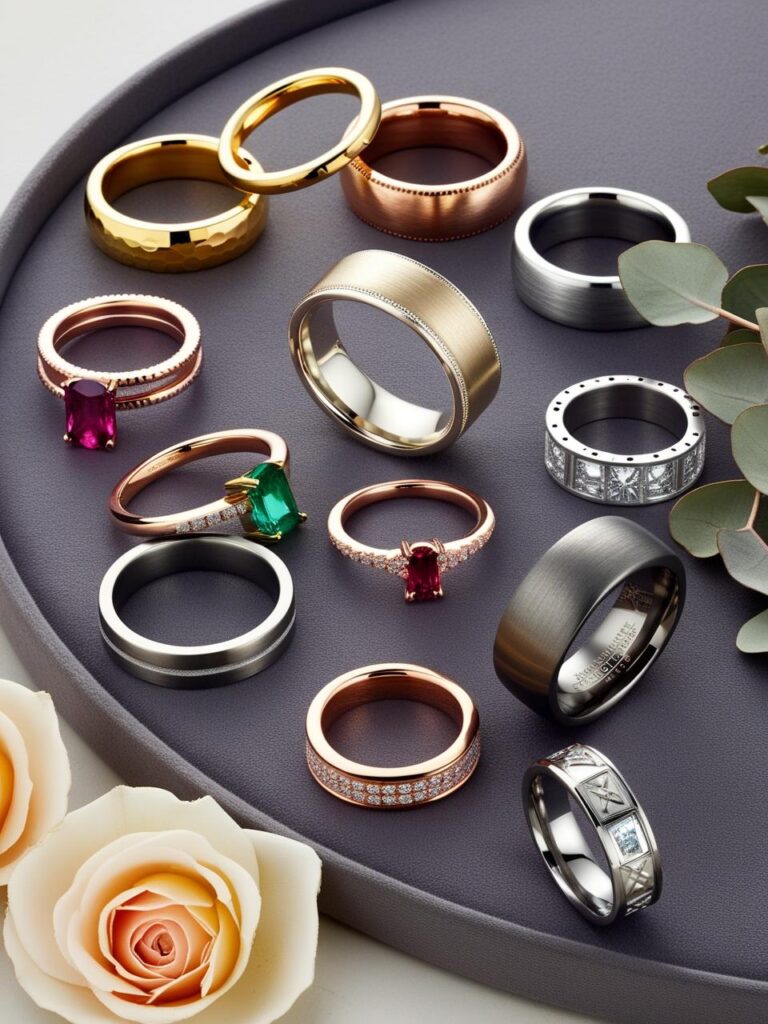
3. Cultural Practices and Wedding Ceremony Customs
Wedding rings play a central role in marriage ceremonies worldwide, though traditions vary significantly:
- In Christian weddings, rings are exchanged during vows, often accompanied by prayers or blessings.
- Jewish ceremonies feature the groom presenting a ring to the bride (or both partners exchanging rings in Reform Judaism) while reciting a specific declaration.
- Post-wedding customs range from wearing the ring continuously to removing it for certain activities. Some cultures, like India, incorporate additional rings, such as toe rings or bangles, as symbols of marital status.
These rituals underscore the ring’s function as both a personal keepsake and a public declaration of commitment.
4. Choosing a Wedding Ring
Selecting the perfect wedding ring involves balancing personal preference, lifestyle, and budget. Consider the following:
- Coordination: Match your ring’s metal type and style with your engagement ring for a cohesive look.
- Band Width: Choose a width that suits your finger size and ensures comfort.
- Material: Opt for durable metals like platinum if you lead an active lifestyle.
- Cost: Set a realistic budget, keeping in mind that prices can range from $100 to over $3,000.
- Customization: Explore engravings, gemstones, and mixed-metal designs to create a one-of-a-kind piece.
Couples increasingly choose rings together, ensuring both partners feel connected to the final selection.
5. Caring for Wedding Rings
To preserve your ring’s beauty, follow these care tips:
- Clean regularly using warm water, dish soap, and a soft toothbrush.
- Remove during high-impact activities to prevent damage.
- Avoid exposure to harsh chemicals.
- Store in a secure, lined jewelry box.
- Schedule annual professional cleanings and inspections.
Consider insuring your ring against loss, theft, or damage for added peace of mind.
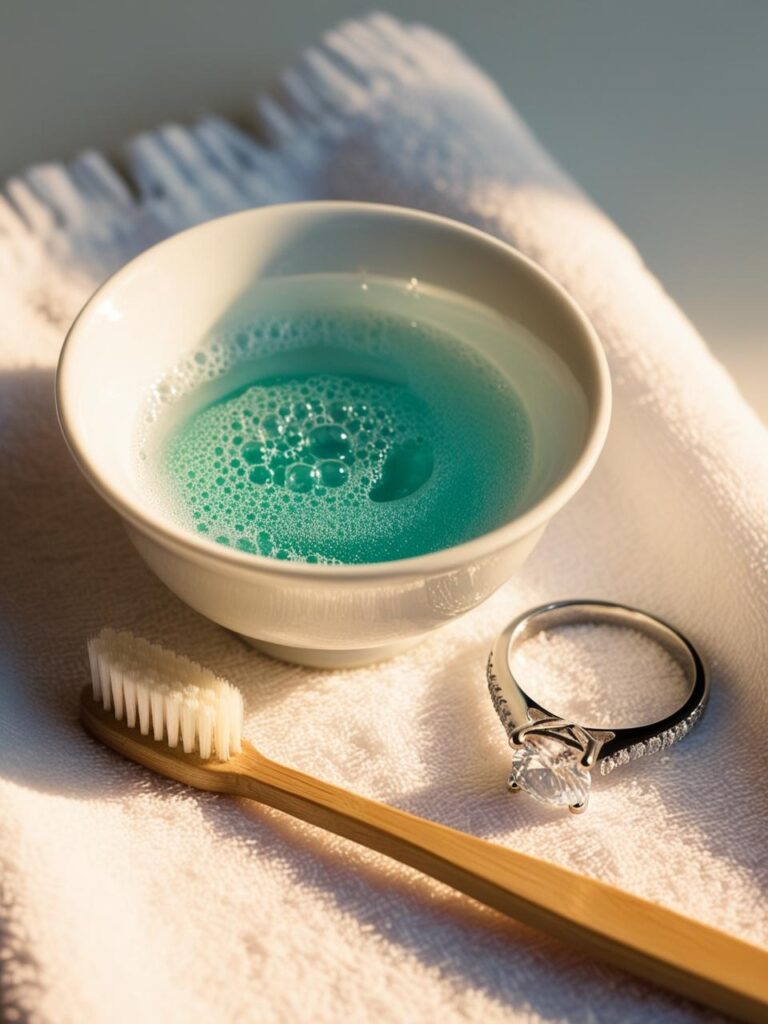
6. Stackable Wedding Rings
Stackable rings allow for creative expression and flexibility. Whether commemorating milestones or showcasing personal style, these rings can be mixed and matched to create stunning combinations. Tips for styling stackable rings include balancing textures, mixing metals, and incorporating meaningful engravings or gemstones.
Conclusion
Wedding rings embody the enduring power of love and commitment, transcending time and culture. From their ancient origins to modern innovations, these rings have evolved into deeply personal symbols of partnership. By understanding their history, exploring diverse styles, and prioritizing proper care, you can ensure your wedding ring remains a cherished reminder of your special day for years to come.
No matter your choice, a classic band, a gemstone-adorned masterpiece or a stackable set, your wedding ring is more than jewelry. It’s a testament to your journey and a lasting emblem of your devotion.
Final Thought: Treat your wedding ring with the same care and reverence you bring to your relationship, and it will shine brightly through all of life’s adventures.
